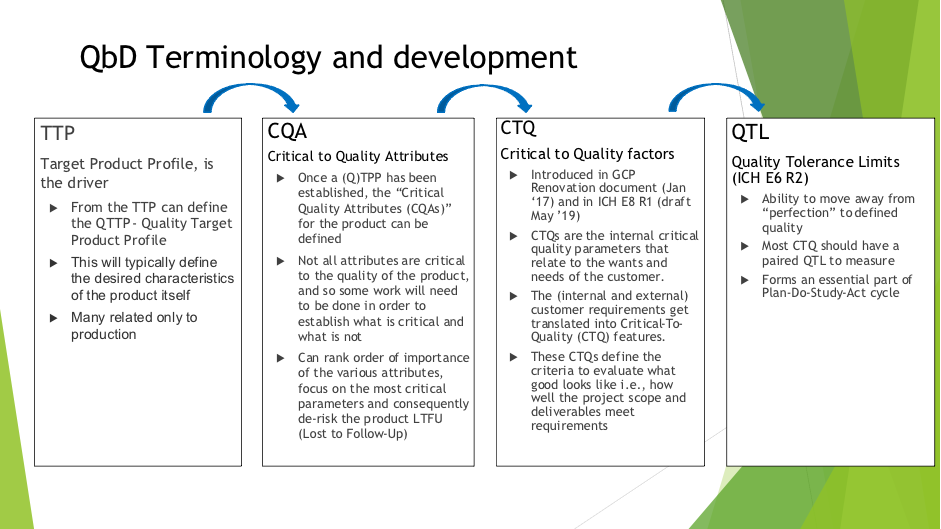You are viewing an old version of this page. View the current version.
Compare with Current
View Page History
« Previous
Version 86
Next »
Project Scope |
- Define role of QTLs in QbD, in particular the relationship to CTQs (Critical to Quality Factors), Estimands and continuous quality improvement (CQI)
- Discuss the use of QTLs in Early Development/small studies, bio equivalence and complex designs
- Discuss examples of how to define QTLs, different methodologies and different parameters in use across the industry
- Discuss difficulties and challenges of implementation of QTLs
- Examine role of QTLs as part of the of the lessons learned (RCA) feedback loop
|
|
|---|
- Survey Instruments completed and shared within industry
- Collected responses from 15 companies
- Team is evaluating results and preparing for the delivery of a White Paper
|
| Objectives & Deliverables | Timelines |
| Release of draft White Paper | Q3 2022 |
| Publish White Paper | Q3 2023 |
Problem Statement QTLs - the role they play in defining quality within the QbD framework, their relationship to Critical to Quality factors, associated methodologies and the interpretation of them have not been fully defined in clinical development, in particular where early development/small studies, bio equivalence studies and complex designs are concerned. Problem Impact This will impact the whole clinical development process and allow the move away from perfection to a defined and achievable quality, from which continuous quality improvement can begin. |
| Terminology Example: - Target Product Profile (TPP)
- Patient wants extended dosing from current BD product on market
- Critical Quality Attribute (CQA)
- Critical to Quality Factor (CTQ)
- In early stage trials drug levels shown at 24 hours
- In Phase 2-3 demonstrate efficacy
- Quality Tolerance Limit
- Pre-define what will be acceptable limits for acceptance
- These QTL's will change at different stages
|

